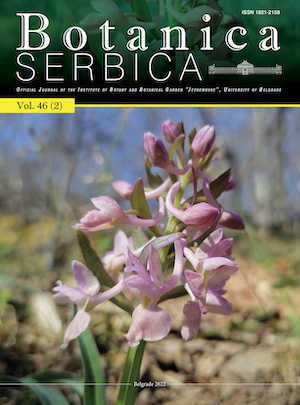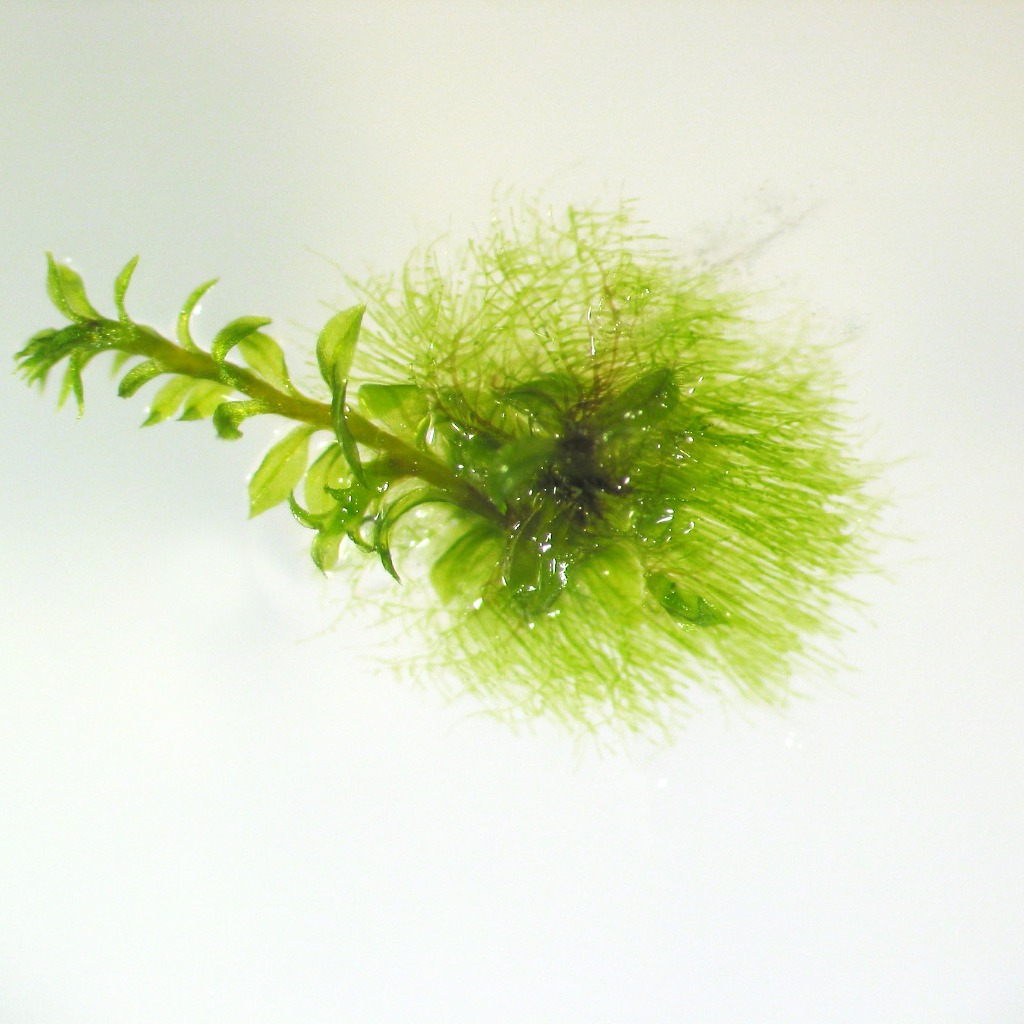
Volume 46 Issue 2 2022 |
Hyperaccumulator plant discoveries in the Balkans: accumulation, distribution, and practical applications
|
KEY WORDS: hypertolerance, metallophyte, flora, ultramafics, nickel, thallium |
Grape stalks as a source of antioxidant and antimicrobial substances and their potential application
|
KEY WORDS: bacteria, extracts, flavonoids, fungi,natural preservatives, total phenols |
Micropropagation of rare bryo-halophyte Hennediella heimii
|
 The rare moss species Hennediella heimii (Pottiaceae) was established in in vitro culture. Various treatments were tested to achieve axenical cultures. The most effective sterilising procedure was NaDCC treatment of sporophytes, keeping the spore viability and giving high disposal of xenic cohabiting organisms. The effects of plant growth regulators were studied regarding new shoot formation, i.e. bud formation on the protonemal filaments and protonemal patch size. Low concentrations of cytokinin and medium concentrations of auxin are shown to increase protonemal patch size and shoot production. Multiplication of H. heimii was observed to occur spontaneously on BCD medium type, but to achieve better and rapid biomass production and development it is suggested to grow it on a BCD medium enriched with auxin and cytokinin combined. The rare moss species Hennediella heimii (Pottiaceae) was established in in vitro culture. Various treatments were tested to achieve axenical cultures. The most effective sterilising procedure was NaDCC treatment of sporophytes, keeping the spore viability and giving high disposal of xenic cohabiting organisms. The effects of plant growth regulators were studied regarding new shoot formation, i.e. bud formation on the protonemal filaments and protonemal patch size. Low concentrations of cytokinin and medium concentrations of auxin are shown to increase protonemal patch size and shoot production. Multiplication of H. heimii was observed to occur spontaneously on BCD medium type, but to achieve better and rapid biomass production and development it is suggested to grow it on a BCD medium enriched with auxin and cytokinin combined.
KEY WORDS: axenic culture, in vitro, plant growth regulators, mosses, multiplication, development |
Established stands of the highly invasive Echinocystis lobata on the Ramsar sites of the southern part of the Pannonian Plain
|
KEY WORDS: allochthonous climber, assembly, habitat type, Pannonian ecoregion, wetlands, wild cucumber |
Phytochemical screening and antioxidant activity of Trigonella cariensis seeds
|
KEY WORDS: Trigonella cariensis, chemical composition, fatty acid, amino acid, DPPH, CUPRAC |
Juniperus macrocarpa endophytes isolated on standard- and plant extract supplemented-culture media - and evaluation of their antimicrobial activity
|
KEY WORDS: antimicrobial activity, endophytes, Juniperus macrocarpa, plant extract supplemented culture media |
Taxonomic significance of pollen morphology of Pterocephalus plumosus (Caprifoliaceae)
|
KEY WORDS: pollen sculpture and structure, diagnostic characters, taxonomy, SEM microscopy, UPGMA analysis, Scabioseae |
Investigation of phenolic compounds, in vitro antioxidant and enzyme inhibition activities of methanol and aqueous extracts of different parts of Glaucosciadium cordifolium
|
KEY WORDS: Glaucosciadium cordifolium, HPLC analysis, antioxidant activity, enzyme inhibition, antiglycation activity |
Resorption of N, P and K from the floating and submerged leaves of the aquatic fern Salvinia natans
|
KEY WORDS: heterosporous fern, foliar nutrient content, N, P and K resorption efficiency |
The effects of functional microbial agents on the soil microbial communities of high-frigid grassland under desertification in Northwest Sichuan
|
KEY WORDS: Desertification of grassland, soil microbial community, functional microbial agents, remediation, the management of degraded grassland |
The anatomy and essential oil composition of the different organs of Pimpinella tragium and P. saxifraga (Apiaceae)
|
KEY WORDS: vegetative organs and fruit anatomy, secretory canals, trichomes, GC-FID/ MS analysis |
A chemometric approach to the headspace sampled volatiles of selected Salvia species from Southeastern Serbia
|
KEY WORDS: Lamiaceae, HS sampling, PCA, cluster analysis, terpenes |
The antioxidant response of Hedera helix leaves to seasonal temperature variations
|
KEY WORDS: ivy leaves, lipid peroxidation, oxidative stress, natural habitats, adaptation |
New records and noteworthy data of plants, algae and fungi in SE Europe and adjacent regions, 9
|
KEY WORDS: new report, Acaulon triquetrum, Anacamptis laxiflora, Anthracoidea pratensis, Cephalanthera damasonium, Chara canescens, Cyathus olla, Gymnomitrion commutatum, Himantoglossum robertianum, Jacobaea othonnae, Lemanea fucina, Massaria campestris, Paralemanea annulata, Porella baueri, Xylaria sicula, SE Europe |
New records and noteworthy data of plants, algae and fungi in SE Europe and adjacent regions, 10
|
KEY WORDS: new report, Adenophora liliifolia, Amanita simulans, Ambrosia artemisiifolia, Brachytheciastrum collinum, Chara tenuispina, Dactylorhiza romana, Lemanea rigida, Meesia longiseta, Microbotryum vinosum, Neotinea maculata, Paralemanea torulosa, Sarcoscypha jurana, Tanacetum corymbosum subsp. cinereum, Terfezia pseudoleptoderma, SE Europe |


